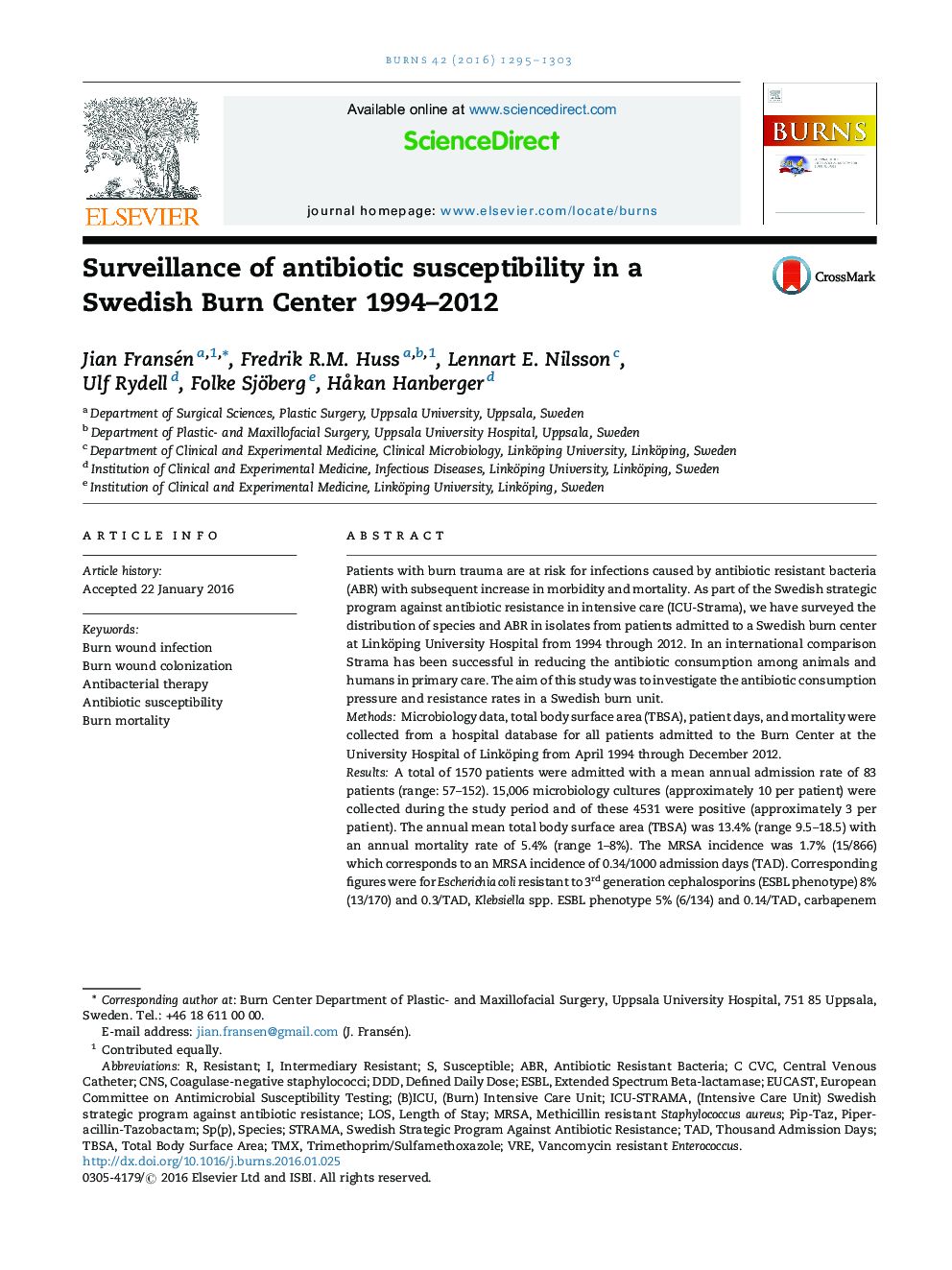| کد مقاله | کد نشریه | سال انتشار | مقاله انگلیسی | نسخه تمام متن |
|---|---|---|---|---|
| 5636333 | 1406667 | 2016 | 9 صفحه PDF | دانلود رایگان |
- Clinical data, microbiology, and antibiotic resistance were studied in a Swedish burn unit.
- 1570 patients were admitted, 15,006 microbiological samples were collected and analyzed.
- Changes were seen in the prevalence of different microbial species.
- Sustained low antibiotics resistance levels and mortality were seen.
Patients with burn trauma are at risk for infections caused by antibiotic resistant bacteria (ABR) with subsequent increase in morbidity and mortality. As part of the Swedish strategic program against antibiotic resistance in intensive care (ICU-Strama), we have surveyed the distribution of species and ABR in isolates from patients admitted to a Swedish burn center at Linköping University Hospital from 1994 through 2012. In an international comparison Strama has been successful in reducing the antibiotic consumption among animals and humans in primary care. The aim of this study was to investigate the antibiotic consumption pressure and resistance rates in a Swedish burn unit.MethodsMicrobiology data, total body surface area (TBSA), patient days, and mortality were collected from a hospital database for all patients admitted to the Burn Center at the University Hospital of Linköping from April 1994 through December 2012.ResultsA total of 1570 patients were admitted with a mean annual admission rate of 83 patients (range: 57-152). 15,006 microbiology cultures (approximately 10 per patient) were collected during the study period and of these 4531 were positive (approximately 3 per patient). The annual mean total body surface area (TBSA) was 13.4% (range 9.5-18.5) with an annual mortality rate of 5.4% (range 1-8%). The MRSA incidence was 1.7% (15/866) which corresponds to an MRSA incidence of 0.34/1000 admission days (TAD). Corresponding figures were for Escherichia coli resistant to 3rd generation cephalosporins (ESBL phenotype) 8% (13/170) and 0.3/TAD, Klebsiella spp. ESBL phenotype 5% (6/134) and 0.14/TAD, carbapenem resistant Pseudomonas aeruginosa 26% (56/209) and 1.28/TAD, and carbapenem resistant Acinetobacter spp. 3% (2/64) and 0.04/TAD.ConclusionsOur results show a sustained low risk for MRSA and high, although not increasing, risk for carbapenem resistant P. aeruginosa.
Journal: Burns - Volume 42, Issue 6, September 2016, Pages 1295-1303
